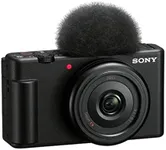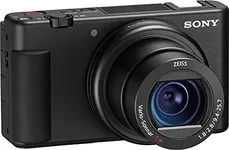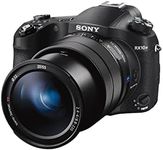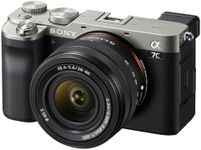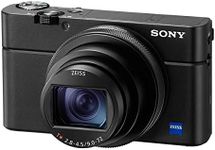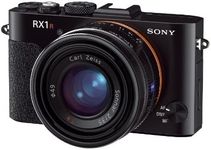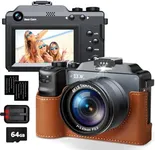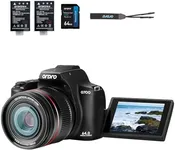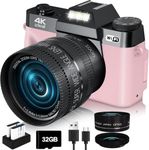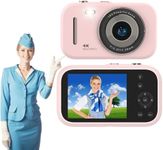Buying Guide for the Best Sony Compact Digital Cameras
When choosing a Sony compact digital camera, it's important to consider your specific needs and how you plan to use the camera. Compact digital cameras are known for their portability and ease of use, making them ideal for everyday photography, travel, and casual shooting. To find the best fit for you, focus on key specifications that will impact your photography experience and the quality of your images.MegapixelsMegapixels refer to the resolution of the camera's sensor, which determines the amount of detail the camera can capture. Higher megapixels mean more detail, which is important if you plan to print large photos or crop images without losing quality. For general use, a camera with 12-20 megapixels is usually sufficient. If you need more detail for professional work or large prints, consider a camera with 20+ megapixels.
Sensor SizeThe sensor size affects the camera's ability to capture light and detail. Larger sensors generally produce better image quality, especially in low light conditions. Common sensor sizes in compact cameras include 1/2.3-inch, 1-inch, and APS-C. For casual photography, a 1/2.3-inch sensor is adequate. If you want better image quality and performance in low light, look for a camera with a 1-inch or larger sensor.
Zoom RangeThe zoom range indicates how much the camera can magnify a subject. Optical zoom is more important than digital zoom, as it maintains image quality. A higher zoom range is useful for capturing distant subjects, such as wildlife or sports. For everyday use, a 3x to 10x optical zoom is usually sufficient. If you need to capture faraway subjects, consider a camera with a 20x or higher optical zoom.
Image StabilizationImage stabilization helps reduce blur caused by camera shake, which is especially useful in low light or when using a long zoom. There are two types: optical and digital. Optical stabilization is generally more effective. If you often shoot in low light or use the zoom frequently, look for a camera with good optical image stabilization to ensure sharp images.
Video QualityVideo quality is important if you plan to record videos in addition to taking photos. Common resolutions include Full HD (1080p) and 4K. Full HD is sufficient for most users and provides good quality for sharing online or viewing on a TV. If you want the highest quality and plan to edit videos or view them on a 4K TV, consider a camera that can record in 4K.
ConnectivityConnectivity options, such as Wi-Fi, Bluetooth, and NFC, allow you to easily transfer photos and videos to other devices or share them online. Wi-Fi is the most common and useful for transferring files to your smartphone or computer. If you frequently share photos on social media or need to transfer files quickly, look for a camera with built-in Wi-Fi or other wireless connectivity options.
Battery LifeBattery life determines how many photos or videos you can take on a single charge. It's important if you plan to use the camera for extended periods, such as during travel or events. Battery life is usually measured in the number of shots per charge. For casual use, a camera with 200-300 shots per charge is adequate. If you need longer battery life, look for a camera that offers 400+ shots per charge or consider carrying a spare battery.
Size and WeightThe size and weight of the camera affect its portability and ease of use. Compact digital cameras are designed to be lightweight and easy to carry, making them ideal for travel and everyday use. If you need a camera that fits easily in your pocket or bag, look for a model that is small and lightweight. However, keep in mind that very small cameras may have fewer features or smaller sensors.
